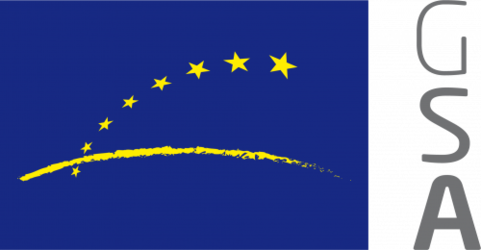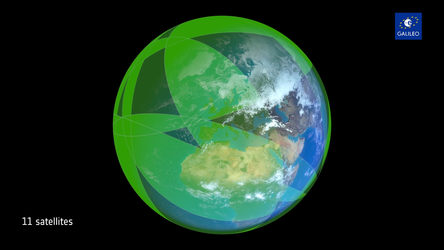Galileo Initial Services: first quarter service performance for users
Europe’s Galileo satellite navigation system has undergone its first performance report since it started work at the end of last year – passing with flying colours.
The European GNSS Agency, GSA, through its GNSS Service Centre, has published the first of its regular quarterly performance reports on Galileo. This ‘European GNSS (Galileo) Initial Services Open Service’ report, now available online, covers the first three months of 2017, and documents the good performance of Galileo Initial Services to date.
The report shows the 11 satellites then operating in the Galileo constellation were able to provide healthy signals 97.33% of the time on a per satellite basis, with a ranging accuracy better than 1.07 m and disseminating global UTC time within its signal to within 30 billionths of a second on a 95 percentile monthly basis.

“Galileo Initial Services were declared by the European Commission on 15 December 2016,” comments Joerg Hahn of ESA’s Galileo System Office,
“It was thanks to the tremendous effort of ESA’s Galileo team working closely together with colleagues from the Commission and GSA that this milestone could be achieved: the key pillars for reaching are the currently deployed Galileo satellites in combination with the global Galileo ground segment infrastructure, defined and implemented by the ESA team with their respective industry partners.”
The Initial Service performance levels achieved by the system are monitored using two complementary monitoring platforms: the Time and Geodetic Validation Facility, an independent precision time-measuring system accurate to a billionth of a second – using an ensemble of atomic clocks located at ESA’s ESTEC technical centre in Noordwijk, the Netherlands – and the Galileo System Evaluation Equipment, GALSEE, based in Rome.

In the future, the independent monitoring of the services will be carried out by GSA’s Galileo Reference Centre, currently taking shape beside ESTEC in Noordwijk. The results for the first quarter of 2017 show the measured performances are generally far better than the minimum performance levels identified in the Service Definition Documents.
“Looking back over the ranging accuracy of the Galileo constellation from the time of the very first positioning fix in 2014 to the present, the overall performance trend for the Open Service is very positive,” adds Joerg.
“It has reached values of less than 1 m in recent months, being already competitive with other satellite navigation systems.
“The high-quality ranging service enables user level positioning with a typical accuracy of around 3 m on the ground and 5 m in altitude during periods when four satellites are visible. With the limited infrastructure so far deployed, current horizontal position fixes can be achieved during more than 80% of the time with accuracies better than 10 m.
“This user level performance is expected to improve with the launch of more satellites making the provided Galileo services more accurate, more available and more robust for end users.”















 Germany
Germany
 Austria
Austria
 Belgium
Belgium
 Denmark
Denmark
 Spain
Spain
 Estonia
Estonia
 Finland
Finland
 France
France
 Greece
Greece
 Hungary
Hungary
 Ireland
Ireland
 Italy
Italy
 Luxembourg
Luxembourg
 Norway
Norway
 The Netherlands
The Netherlands
 Poland
Poland
 Portugal
Portugal
 Czechia
Czechia
 Romania
Romania
 United Kingdom
United Kingdom
 Slovenia
Slovenia
 Sweden
Sweden
 Switzerland
Switzerland





























